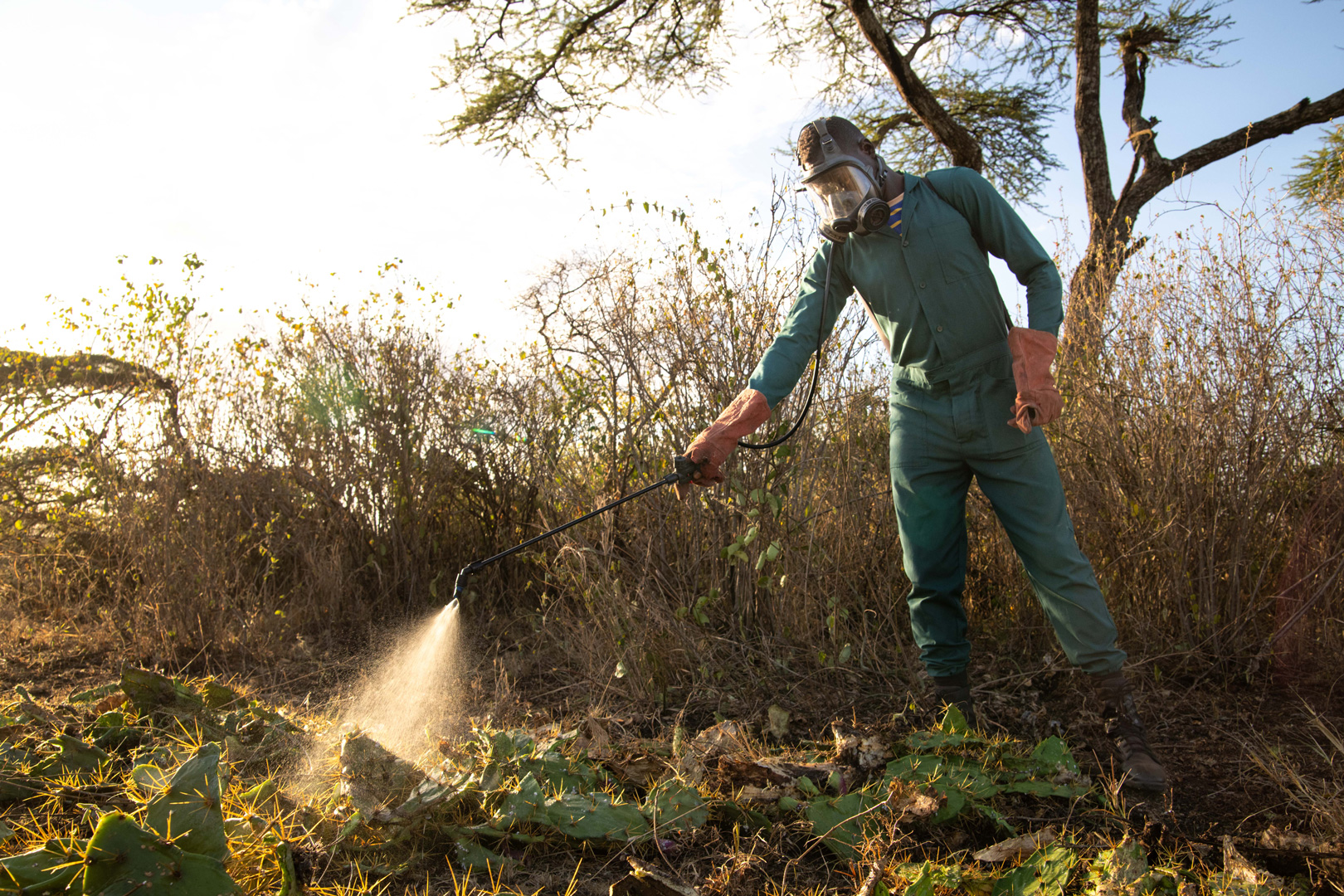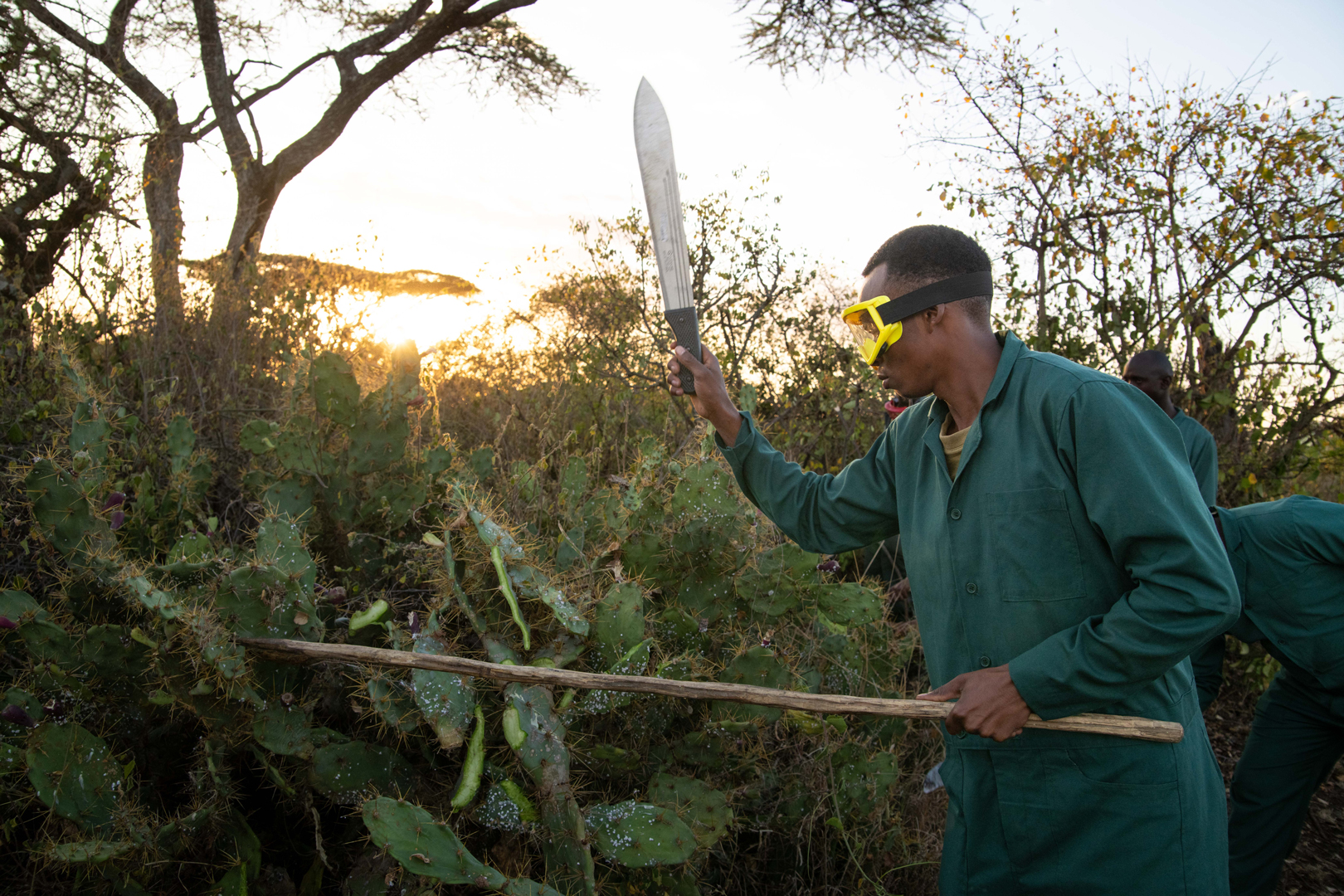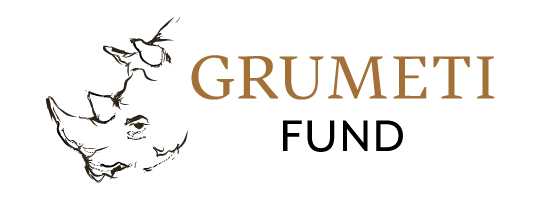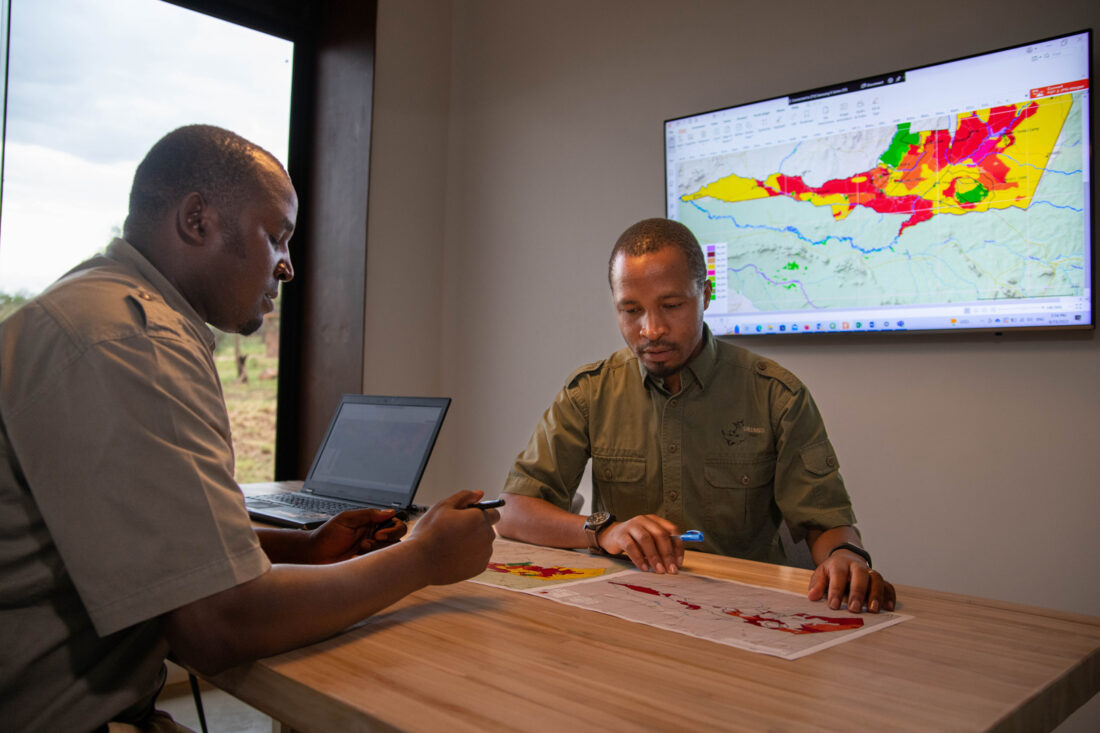Exploring the Opuntia Mystery: Exavery Kigosi’s Research in Grumeti Concession
Invasive alien plant species pose a significant challenge in the Grumeti concession, prompting us to employ various strategies and establish a dedicated team to address them effectively. Key invasive alien plants that are threatening our concession are Chromoleana Odora, Opuntia (prickly pear), Lantana Camara, Tithonia, while Tagetes Minuta is emerging in an alarming rate. Among those leading the charge is Exavery Kigosi, a Ph.D. candidate delving into this realm. His research zeroes in on the interplay between wildlife and the invasive alien plants in the concession and the communities surrounding.
Exavery employs an approach of placing cameras in close proximity to Opuntia plants to capture both photos and videos. These strategically positioned cameras provide valuable insights into animal behaviour as they interact with the Opuntia. Explore further in the interview below, where Exavery discusses the nuances of his research.
- What sparked your interest in studying Opuntia?
My interest in studying Opuntia is rooted in its significance within my research on the impacts of invasive alien plants in the Western Serengeti. While existing literatures mention the occasional consumption of Opuntia by animals such as baboons and elephants, there remains a notable absence of empirical evidence regarding their behavioural interactions with this plant species. This knowledge gap serves as a catalyst for my inquiry, prompting a deeper exploration into the nuances of animal behaviour across diverse wildlife species within this ecosystem

- Why are the results of your study important?
The results of our study are significant for several reasons. While Opuntia does indeed impact habitat quality, it is crucial to comprehend its effects on animal behaviours. Our anticipated outcomes will encompass all captured animals, categorised by their body size. Therefore, understanding how Opuntia alters animal behaviour is important from a research perspective. Moreover, identifying potential risks associated with continued behavioural changes is imperative for informing conservation efforts effectively.
- If resources were unlimited, how would you tackle the invasive plant issue?
If resources were unlimited, our approach to addressing the invasive plant issue would focus on maximising efficiency and effectiveness while prioritising community engagement. Although my research is not directly involved in experimenting controlling methods, in an ideal scenario, I would advocate for the utilisation of cost-effective techniques for managing invasive plants. This might involve the implementation of innovative and sustainable solutions that minimise financial strain. Moreover, I would emphasise the importance of involving diverse stakeholders, including local communities, in the control efforts. By fostering collaboration and shared responsibility, we could harness collective knowledge and resources to achieve long-term success in mitigating the impacts of invasive plants on the ecosystem.
- What advice do you have for local communities dealing with invasive plants?
Before offering advice to local communities grappling with invasive plants, it’s important to understand their knowledge, perceptions, and the impacts associated with these invasive alien species. This aspect is a key objective of my PhD research. By gaining insights and information directly from the community, we can tailor our recommendations to suit their specific needs and circumstances. This approach ensures that the advice provided is not only relevant but also effective in addressing the challenges posed by invasive plants.

- How can individuals outside the community contribute to this issue?
Individuals outside the local community can play a key role in addressing the issue of invasive plants in the Serengeti ecosystem. Given that the Serengeti is a world heritage site and belongs to everyone, it is upon all of us to take action to preserve its natural beauty for future generations. One way individuals can contribute is by making donations to on-the-ground conservation organisations actively involved in combating invasive species. Additionally, supporting further research initiatives aimed at documenting and understanding the impact of invasive plants can provide valuable insights for effective management strategies. By working together and pooling our resources, we can make a meaningful difference in safeguarding the Serengeti ecosystem for the benefit of all.
As Exavery Kigosi continues his research, his work serves as a beacon of hope, inspiring us all to take action in preserving the rich tapestry of life that thrives within the Grumeti Concession and beyond.




